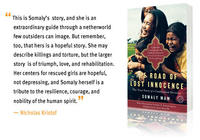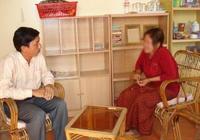Modern-Day Slavery
Although modern-day slavery looks different in North America than it does in Africa or Asia, the industry is nevertheless alive and thriving in all its forms.
Modern-day slaves are often hard to identify – anyone from a dishwasher in a restaurant, to a domestic or agricultural worker, to an adolescent runaway could be one of the millions of individuals trapped in slavery. This is part of why the industry continues to exist so pervasively, and so profitably.
To bring this invisible crime out of the shadows, The Somaly Mam Foundation engages extensively in advocacy and awareness initiatives throughout the US. We worked with the Office of the Mayor of New York to create the anti-human trafficking public education campaign, “Let’s Call an End to Human Trafficking,” which urges New Yorkers to “See it. Know it. Report it!” The campaign offers resources for both victims of trafficking and the general public, as well as a hotline to report suspected cases of trafficking.
Somaly Mam and executive director Bill Livermore presented “Human Trafficking and The Rule of Law: Real World Challenges and Solutions” at the 2010 Crimes Against Children Conference, which brings together professionals who work with child victims of crime. The presentation chronicled some of SMF’s most successful approaches, including survivor-driven programming for victims of trafficking, and collaboration with law enforcement and government.
We have built strong partnerships with The Body Shop and LexisNexis to raise awareness and funds for the fight against modern-day slavery. We also award grants to victim service providers, to help them carry out the vital work of rescue, rehabilitation, and reintegration.
Public awareness and education are vital if programs like these are to expand in the US. Awareness campaigns and training for law enforcement can help spread the knowledge that human trafficking does happen in the US, and that victims need access to tailored and comprehensive social services to recover from the horrors that they have experienced.
Without coordinated efforts, traffickers will continue to fly under the radar, seizing victims from the streets, from schools, and from their families.
















